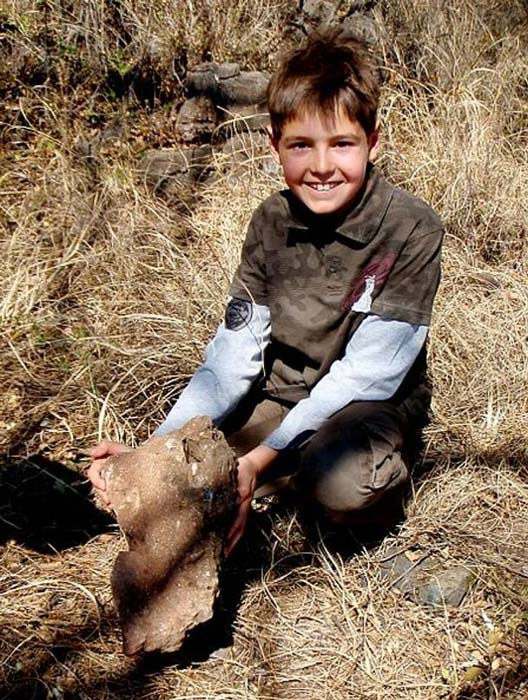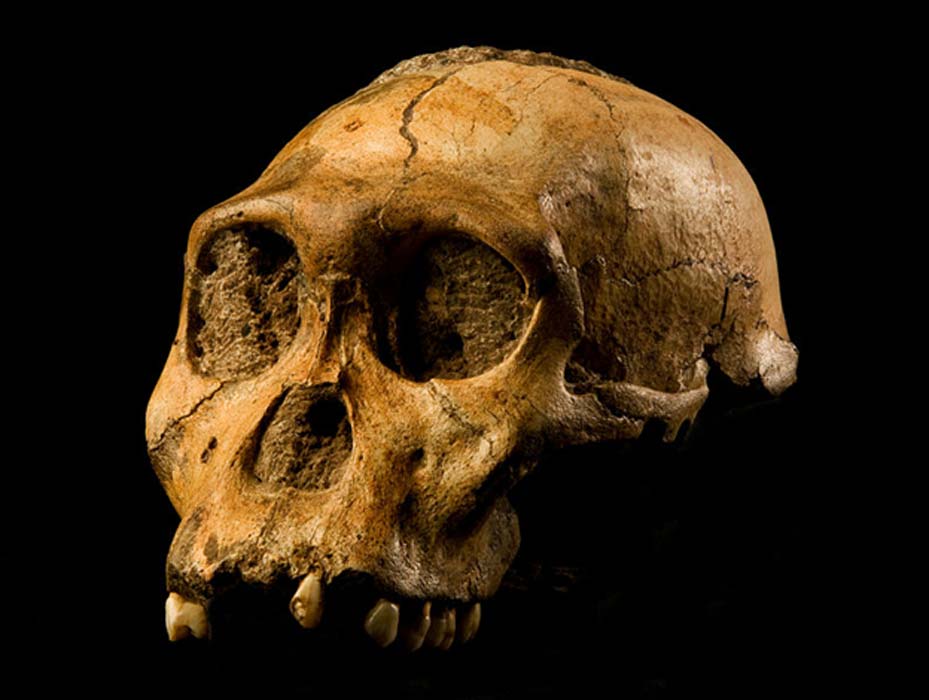Statistical Date Analysis Concludes That 'Ancient Human' Was Not Our Ancestor
One of the great issues in all of science is the search for the direct ancestor of modern humans. Many species of hominin have been put forward down the years and a recently uncovered species Australopithecus sediba has been claimed as the progenitor of all humans living today. However, tests have shown that this hypothesis is highly unlikely and that the search for our direct ancestor must continue.
Scientists have largely agreed that hominins known as Australopithecus, are our most likely ancestors. Australopithecus afarensis was found in the 1970s, and the first finds of this hominin are from the famous ‘Lucy’. However, in 2008 experts discovered evidence of another member of the Australopithecus family who was a very distant relative of the ape-like Lucy.

Australopithecus sediba, two fossils of which are shown on the left and right, are thought to have been a transitional species between older Australopithecus, like Lucy in the middle, and later Homo species. Image compiled by Peter Schmid courtesy of Lee R. Berger. (CC BY-SA 3.0 )
Discovery of a new species
The 9-year-old son of a well-known paleoanthropologist Thomas Berger unearthed the jawbone and other bone fragments of a hitherto unknown species in Mapala Cave in South Africa. This caused an international sensation and immediately Berger and his colleagues claimed that the new hominin which they named Australopithecus sediba, after a local word for source , was the direct ancestor of anatomically modern humans.
The find was determined to be two million years old, this and its unique set of ape-like and advanced features gave some credence to the claims. According to a blog in Discover Magazine the assertion also reinvigorated ‘an old idea that the roots of human evolution were in South Africa’.
However, not everyone was convinced in the academic community, ‘primarily because the numbers didn’t seem to add up’ reports Cosmos Magazine. According to the study in Science Advances, the Australopithecus sediba fossils ‘postdates the earliest Homo by 800,000 years’. This meant that the dating of Australopithecus sediba was all wrong if it was to be our progenitor. The species found first by Berger’s son was considerably younger than the earliest evidence we have of the Homo genus.

Matthew Berger moments after the discovery of the clavicle of Australopithecus sediba at the Malapa site. Photo by Lee R. Berger (CC BY-SA 3.0)
Was Australopithecus sediba our ancestor?
The discovery of the new species in South Africa resulted in a great deal of debate, especially as many other discoveries of Australopithecus sediba were made at Mapala Cave. There are many studies published on the hominin fossils found in Mapala Cave, but according to Discover Magazine, none came to definite ‘conclusions but leaving the door open on its potential as our distant ancestor’.
The majority of researchers did not accept that humans are descended from the species found in South Africa because the hominin remains are younger than the oldest fossils of the Homo genus. To many, it did not make sense to claim that remains that were younger than the earliest known Homo could be from its ancestor.
- How Much Evidence is Enough to Declare a New Species of Human from a Philippines Cave Site?
- Have Scientists Really Discovered A New 3.67 Million-Year-Old Species of Upright Hominid?

Fossil casts of Australopithecus afarensis (left), Homo habilis (center), and Australopithecus sediba (right). (Matt Wood, UChicago)
Highly unlikely to be our ancestor
The controversy led to a team from the University of Chicago, developing a test to determine, once and for all if the evidence did show that Australopithecus sediba was the ultimate origin of modern humans. Under lead researcher Andrew Du Ph.D., they developed statistical models that calculated the probability that this genus of Australopithecus was the ancestor of subsequent humans. After testing a number of hypotheses, they established that Berger’s theory on human origins was highly unlikely.
According to Science Advances, the University of Chicago team found that an ‘ancestor’s fossil horizon that is at least 800,000 years younger than the descendant’s fossil horizon is unlikely (about 0.09% on average)’. This meant that the fossils were simply not old enough to come from our progenitor, as many had suspected.
However, this is not going to settle the controversy. Even the lead author of the study is quoted by Inverse as ‘stating that it is ‘difficult for science to conclusively settle a debate’.
On balance, Lucy is top contender
Science Daily quotes Zeresenay Alemseged, PhD, the Donald M. Pritzker Professor of Organismal and Biology and Anatomy at University of Chicago and co-author of the study as stating:
"Given the timing, geography and morphology, these three pieces of evidence make us think afarensisis a better candidate than sediba. One can disagree about morphology and the different features of a fossil, but the level of confidence we can put in the mathematical and statistical analyses of the chronological data in this paper makes our argument a very strong one."
- The Evolution of Human Birth: An Incredible Story a Million Years in the Making
- The Dikka Child Toddled Over the Ethiopian Landscape 200,000 Years Before Lucy

The Hidden Treasures of Ethiopia’ exhibit at Houston Museum of Natural Science featuring a model of “Lucy”. (Jason Kuffer/CC BY NC ND 2.0 )
In recent years there have been a great many other discoveries that would seem to reject the idea that the fossils found in Mapala Cave are from our ancestor. These include the discovery of Homo Nadeli which was also discovered by a team led by Berger. Then there is the discovery in north-eastern, Ethiopia of a fossil that is almost 3 million years ago and this is held by some to be the oldest remains from a member of the Homo genus.
The American university’s statistical study shows that Australopithecus sediba, probably lived after the emergence of our earliest ancestors, by up to a million years. This and recent discoveries especially in Ethiopia almost rule out the possibility that the hominin species found in South Africa in 2008 is our ancestor. This means that Australopithecus afarensis, or ‘Lucy’ is the most likely candidate to be our progenitor, but even this is not definite.
Top image: Skull of Malapa hominid 1 (MH1) from South Africa, named "Karabo". The combined fossil remains of this juvenile male is designated as the holotype for Australopithecus sediba. Source: CC BY-SA 4.0
By Ed Whelan



















